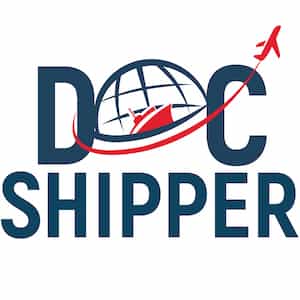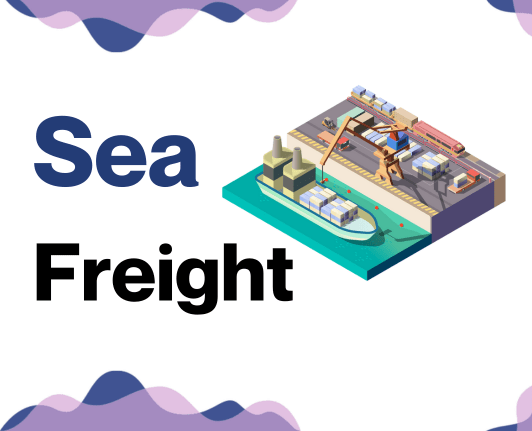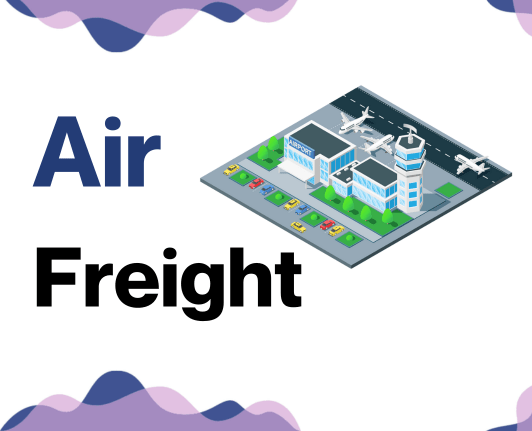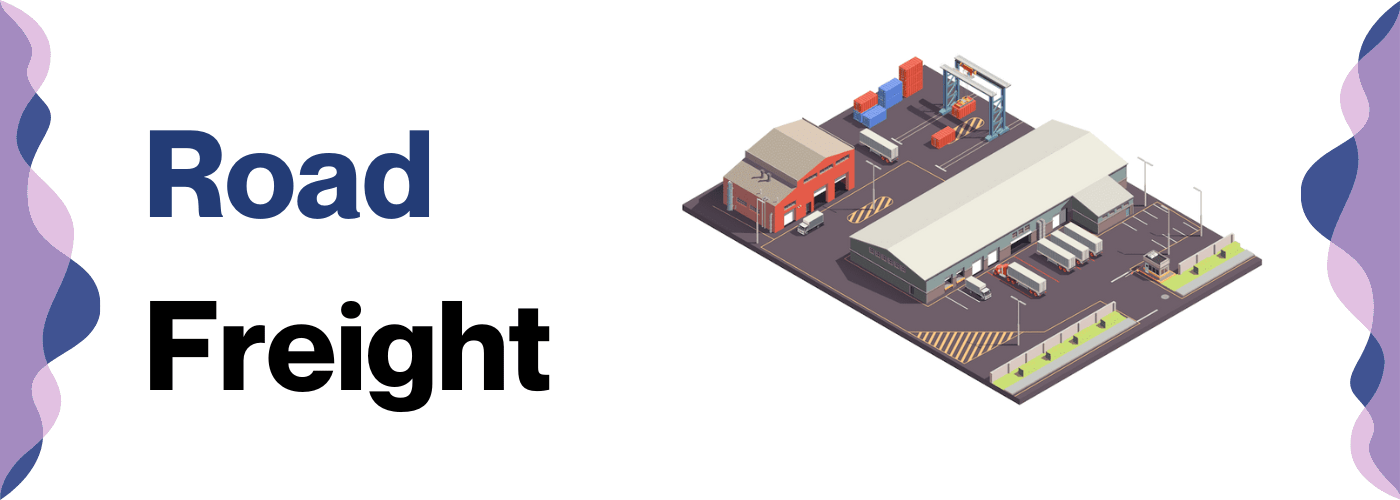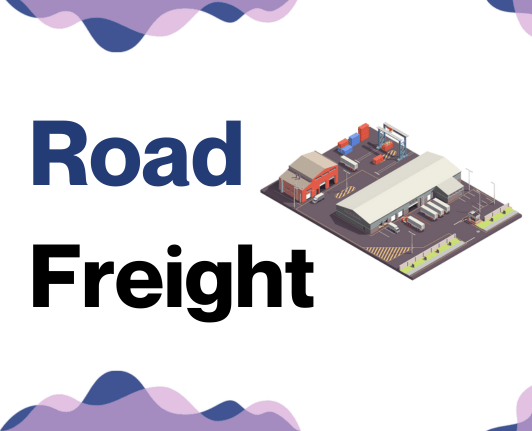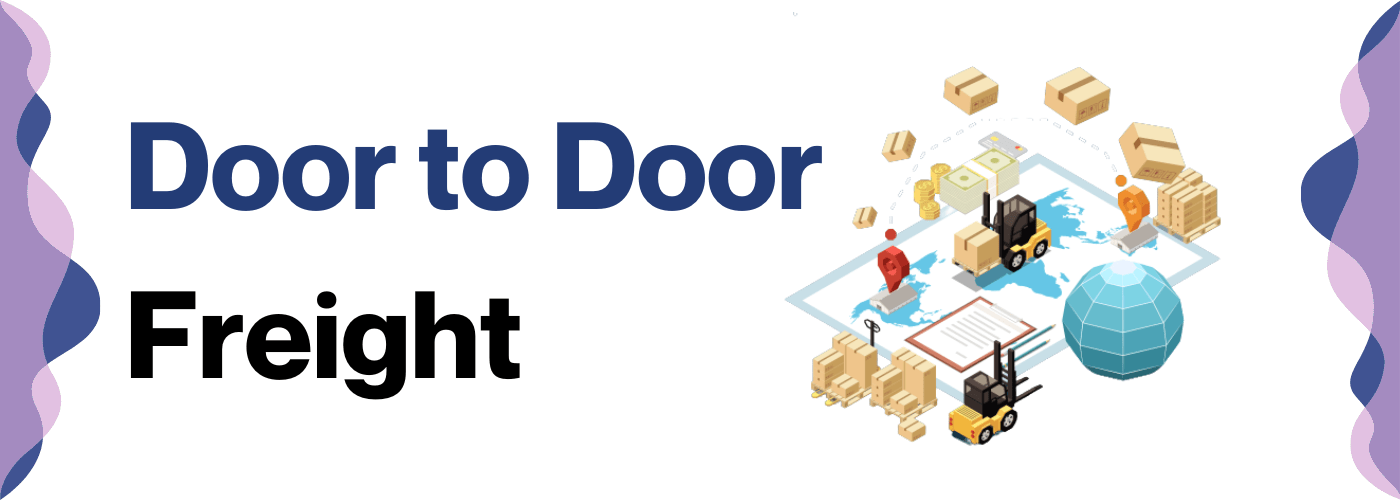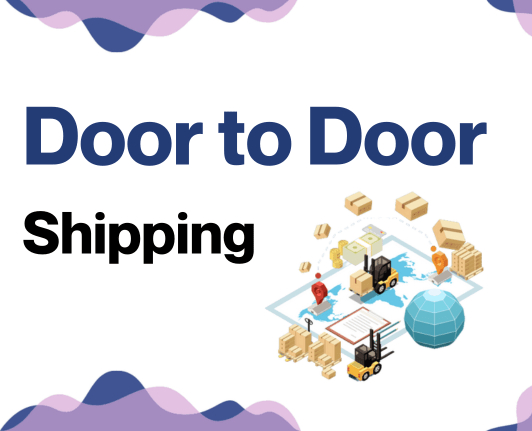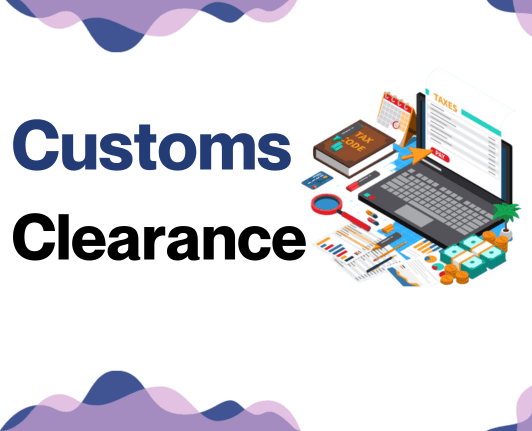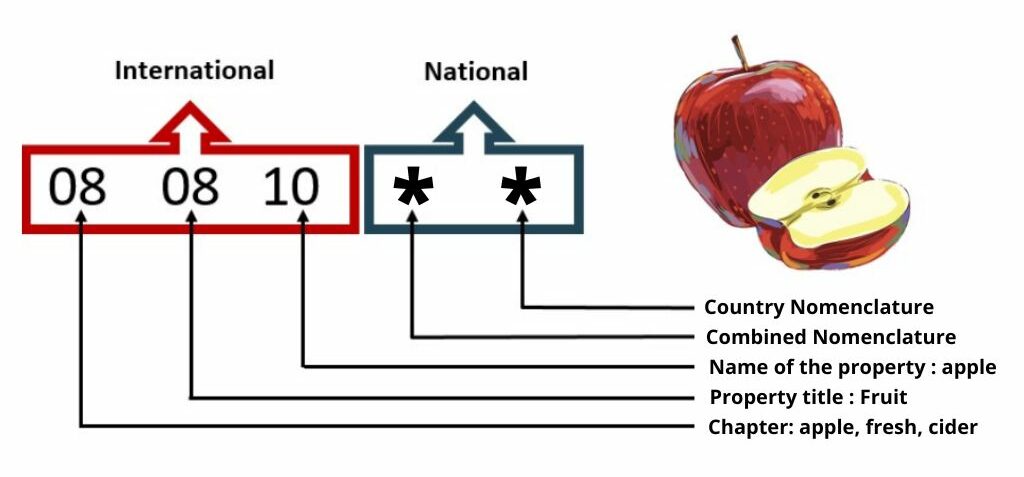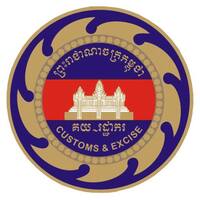Shipping goods from Malaysia to Cambodia need not be as tricky as a durian fruit! The challenge of understanding rates, complying with transit times, and navigating complex customs regulations can be daunting. This comprehensive yet digestible guide sheds light on the ins and outs of transferring your freight between these two Southeast Asian countries. Delving deep into matters such as types of transport, customs clearances, duties, and taxes, we strive to help businesses like yours turn uncertainties into strategic decisions. You can expect practical, actionable advice tailored specifically for your enterprise's needs. If the process still feels overwhelming, let DocShipper handle it for you! As a reputable international freight forwarder, DocShipper converts your logistics challenges into seamless success. Unburden yourself from the complexities and let us take the wheel.
Table of Contents
Which are the different modes of transportation between Malaysia and Cambodia?
Shipping goods between Malaysia and Cambodia? It's like selecting the fastest route for your morning jog - guided by distance and terrain. Landlocked regions, distance, and traffic greatly influence which mode you lace up for, or rather, which transport method to pick. Sea freight via the South China Sea is practical and economical, while air freight offers swiftness. Road transport potentially blends the benefits of both. Remember, your choice is the running shoes to your business, carrying your goods efficiently across borders. Pick wisely!
How can DocShipper help?
Struggling with shipping goods between Malaysia and Cambodia? Let DocShipper take the helm! From complex customs to the perfect transport mode, we've got your logistics sorted. Say goodbye to stress, ask our consultants for free advice or get your free estimate within 24 hours. You focus on your business, we'll focus on getting your cargo there!
DocShipper Tip: Sea freight might be the best solution for you if:
- You're dealing with hefty quantities or oversized goods. Sea transport is your go-to for maximizing space without stretching your budget.
- Time sensitivity isn't a concern for your shipment. Ocean freight is known for its leisurely pace, especially when compared to the speed of air or rail.
- Your supply chain connects key international harbors. This positions you to take full advantage of a wide-reaching network of ocean trade routes.
Sea freight between Malaysia and Cambodia
The bustling trade route between Malaysia and Cambodia largely relies on Sea freight, with Port Klang (Malaysia) and Sihanoukville Autonomous Port (Cambodia) acting as crucial nerve centers for these exchanges. While it's not the fastest option, ocean shipping shines bright for high-volume goods, offering an economic approach shippers value.
Yet, sailing these waters isn't all smooth. Businesses often grapple with complex shipping rules, and common pitfalls can make the journey feel like an uphill task. The technicalities of shipping containers, perplexing customs procedures, and fluctuating shipping rates - it's like solving a gigantic puzzle with pieces that keep shape-shifting! But, don't hit the panic button just yet.
In this section, we will dive into the nitty-gritty of shipping between these two nations to ensure you stay ahead of the curve. By clarifying best practices and specifications, we aim to set you on the right course, avoiding common mistakes and efficiently navigating the world of international trade.
Main shipping ports in Malaysia
Port Klang
Location and Volume: Strategically located on the west coast of Peninsular Malaysia, Port Klang() is the nation's busiest port, with a shipping volume of over 13 million TEU in 2020.
Key Trading Partners and Strategic Importance : Port Klang services almost every shipping line operating container services. Its prime trading partners include China, Singapore, the European Union, and the United States. It plays a strategic role in national development as it is the entry and exit point for the majority of Malaysia's trade, specifically in manufactured goods.
Context for Businesses: If you're seeking to tap into both regional and transcontinental markets, Port Klang might be a critical player in your logistics strategy due to its modern facilities and excellent connections to Malaysia's railway network and major highways.
Port of Tanjung Pelepas
Location and Volume: Situated at the confluence of the main east-west shipping lanes, the Port of Tanjung Pelepas is a popular choice for many international shipping lines with a volume of over 9 million TEU in 2020.
Key Trading Partners and Strategic Importance: The main trading partners are Singapore, China, Indonesia, and the United States. The port is strategically located to serve the Southeast Asia region and acts as a key transit point for international freight.
Context for Businesses: For businesses eyeing the Southeast Asian markets or considering a transit point for their freight, the Port of Tanjung Pelepas can be an ideal port of call due to its strategic location and advanced facilities.
Johor Port
Location and Volume: Located in the southern tip of the mainland, the Johor Port() handles a wide variety of general cargo, with a volume reaching 27.5 million freight weight tonnes in 2019.
Key Trading Partners and Strategic Importance: Its top trading partners include Indonesia, Thailand, Singapore, China, and Australia. Being one of the top industrial terminals in the region, it plays a key role in supporting the southern industrial zones of Malaysia.
Context for Businesses: If you are in the bulk or breakbulk industry and are eyeing Asian markets, Johor Port would be an essential part of your logistics plan given its specialty in handling such cargo and its proximity to these markets.
Penang Port
Location and Volume: Located on the northwestern part of Peninsular Malaysia, Penang Port is a versatile port, handling varied cargo types and with a volume of over 1.3 million TEU in 2020.
Key Trading Partners and Strategic Importance: Primarily dealing with East Asian and Southeast Asian countries like China, Singapore, and Japan, it plays an indispensable role in the region's trading system.
Context for Businesses: If your business involves diversified types of cargo and aims to penetrate East and Southeast Asian markets, Penang Port's versatility and location would make it a potentially suitable choice.
Port of Bintulu
Location and Volume: Situated on the island of Borneo, Port of Bintulu has a unique focus on liquefied natural gas (LNG) and handled 264.16 million freight weight tonnes in 2020.
Key Trading Partners and Strategic Importance: Its main trading partners are Japan, South Korea, and Taiwan. This port is the world's largest LNG export terminal and the leading port for energy and timber products.
Context for Businesses: For businesses engaged in the LNG or timber industries, considering partners in Japan, South Korea, and Taiwan, the Port of Bintulu would be an essential component of your shipping strategy due to its specific focus and capacities.
Port of Kuantan
Location and Volume: Located on the east coast of Peninsular Malaysia, Port of Kuantan specializes in handling bulk cargo, with a volume of over 30 million freight weight tonnes in 2020.
Key Trading Partners and Strategic Importance: Kuantan's main trading partners include China, India, and Australia. It is pivotal in regional trade, particularly because of its significant role as an export hub for major industrial areas in Malaysia.
Context for Businesses: If your business is highly engaged with bulk cargo and the trade markets of China, India, and Australia, Port of Kuantan may be worthwhile inclusion in your logistics considering its specialization and strategic location.
Main shipping ports in Cambodia
Port of Sihanoukville
Location and Volume: Situated on the Gulf of Thailand, the Port of Sihanoukville is the largest international port in Cambodia. It currently handles nearly 90% of Cambodia’s container traffic with a shipping volume of around 540,000 TEU.
Key Trading Partners and Strategic Importance: The port's main trading partners include China, Singapore, Korea, and other ASEAN countries. It plays a strategic role due to its direct shipping route connection to major ports around the world.
Context for Businesses: If you are looking to tap into the rapid growth of Cambodia's economy, the Port of Sihanoukville is a crucial logistics hub due to its scale, connectivity, and the variety of goods it handles, from textiles to agricultural products.
Phnom Penh Autonomous Port
Location and Volume: Located in the town of Phnom Penh, Cambodia's capital city and its central economic hub, this port handles a shipping volume of approximately 250,000 TEU.
Key Trading Partners and Strategic Importance: Phnom Penh Autonomous Port, aside from domestic cargo, serves international trades with Vietnam, India, and other ASEAN countries. It serves as a vital hub for businesses that require inland transit.
Context for Businesses: Ideal for businesses looking to transit goods inland or require close proximity to Cambodia's capital, the Phnom Penh Autonomous Port might be an essential part of your logistics strategy due to its strategic location and good connectivity for inland shipping.
Port of Kampot
Location and Volume: The Port of Kampot, one of the smaller ports in Cambodia, is located close to the border of Vietnam. The shipping volume information is not publicly available.
Key Trading Partners and Strategic Importance: Its proximity to Vietnam positions it as a conventional gateway for trade between the two countries.
Context for Businesses: If your shipping strategy involves frequent transit between Cambodia and Vietnam, the Port of Kampot, due to its location and unique bilateral trade advantages, could prove to be a valuable addition to your shipping strategy.
Should I choose FCL or LCL when shipping between Malaysia and Cambodia?
Picking between consolidation shipping and a full container load is like choosing between carpooling and hiring a personal cab for your products. What's best for your Malaysia-to-Cambodia sea freight may vary - each option having a unique impact on cost, delivery duration, and the smooth sailing of your shipment. In this section, we will delve into the nitty-gritty of both these options, helping you make an informed, strategic decision. So, let's set sail on this sea of knowledge!
LCL: Less than Container Load
Definition: LCL (Less than Container Load) is a shipment method where various consignments from different shippers are combined into one container. It's a budget-friendly option if your cargo doesn't fill a full container.
When to Use: Harness LCL shipping when your cargo is less than 13/14/15 CBM. This is a flexible option for small businesses or when volume is low, allowing you to pay only for the space your freight occupies.
Example: Imagine you're a local entrepreneur in Malaysia who manufactures artisan soaps. Your Cambodian client orders 10 CBM worth of products. As this volume doesn't warrant an FCL (Full Container Load), an LCL shipment is more cost-effective.
Cost Implications: An LCL freight quote considers various factors, including weight, volume, and nature of the goods, which influence the final cost. It's crucial to note that you may face additional charges like LCL handling fees. However, the cost is often lower compared to other shipping methods, making it suitable for budget-conscious businesses.
FCL: Full Container Load
Definition: FCL Shipping, known as Full Container Load, is an ocean freight transportation option where you have exclusive rights to a complete 20'ft or 40'ft container.
When to Use: You might opt for an FCL container typically if your cargo surpasses 13-15 cubic meters (CBM). This is because it is a cost-effective choice for bulky shipments, providing a cheaper FCL shipping quote per unit. It also ensures greater safety as the container is sealed once your goods are loaded at the origin and isn’t opened till it reaches the destination.
Example: Suppose your furniture business is transporting a large shipment of dining sets from Malaysia to Cambodia. Each set measures 1 CBM and you have 20 to ship. Choosing FCL shipping would economically and safely accommodate your needs.
Cost Implications: While exact prices can vary, FCL shipping's per-unit cost typically decreases as the volume of your cargo increases, making it a cost-efficient option for large shipments. However, keep in mind that quotes can depend on a variety of factors, including the market rate, fuel surcharges, and additional handling fees.
Unlock hassle-free shipping
At DocShipper, our aim is to streamline your cargo shipping between Malaysia and Cambodia. Our team of ocean freight experts is here to guide you, whether consolidation or full container shipping suits your needs best. Key considerations include volume and nature of goods, budget, and delivery timelines. Don't navigate these waters alone! Reach out to us today for a free, no-obligation shipping estimate. Your hassle-free international trade journey starts with DocShipper.
How long does sea freight take between Malaysia and Cambodia?
On average, sea freight transit between Malaysia and Cambodia takes approximately 12-20 days. These times take into consideration factors like the specific ports used, the weight of the shipment, and the nature of the goods. For an accurate, tailored estimate, we recommend consulting with a freight forwarder like DocShipper.
Below is the estimated sea freight transit time between the four main ports in Malaysia and Cambodia:
| From (Malaysia) | To (Cambodia) | Average Shipping Time (Days) |
| Port Klang | Sihanoukville Port | 5 |
| Tanjung Pelepas | Sihanoukville Port | 5-9 |
| Penang Port | Sihanoukville Port | 5 |
| Johor Port | Sihanoukville Port | 4 |
*Please note that Cambodia only has one main freight port - Sihanoukville Port. The transit times mentioned are averages and actual times may vary.
How much does it cost to ship a container between Malaysia and Cambodia?
Ocean freight rates vary greatly when shipping a container between Malaysia and Cambodia, typically ranging from a wide bracket of approximately $850 USD to $4550 USD per CBM. This fluctuation is largely due to various factors: the specific Point of Loading and Point of Destination, the carrier employed, the nature of your goods, and the ever-changing dynamics of market custom rates. Then there's the element of monthly market conditions which can cause additional variations in the shipping cost. However, worry not. Our shipping specialists are ready to navigate these complexities and work closely with you on a case-by-case basis, ensuring the most viable rates for your unique shipping needs. Trust us, we've got you covered!
Special transportation services
Out of Gauge (OOG) Container
Definition: OOG containers, or Out of gauge cargo, are specially designed sea containers for transporting oversized goods that can't fit into standard containers.
Suitable for: Oversized equipment, machinery, large parts, or project cargo that exceeds the dimensions of standard containers.
Examples: Industrial machinery, windmill blades, or large parts of ships/airplanes.
Why it might be the best choice for you: They provide unparalleled flexibility for transporting oversized, non-standard goods, ensuring the safety of your cargo throughout transit.
Break Bulk
Definition: The term 'break bulk' refers to the process of packing smaller, separate items into a single, large shipment. Instead of being loaded in containers, goods are individually handled.
Suitable for: Larger goods that are not containerized, such as timber, steel or machinery.
Examples: Oil rig parts, long pipes, yachts, or construction equipment.
Why it might be the best choice for you: This method provides the most cost-effective solution for large, irregularly shaped, or heavy items that can't be containerized.
Dry Bulk
Definition: The 'Dry bulk' term is used for goods that are packed in bulk without any packaging and are shipped in large quantities.
Suitable for: Commodities like grain, coal, iron ore or sugar.
Examples: Agriculture products, minerals, or construction materials.
Why it might be the best choice for you: If you're shipping loose cargo loads of raw, granulated materials, Dry Bulk is a cost-effective and efficient option.
Roll-on/Roll-off (Ro-Ro)
Definition: Ro-Ro vessels, or Roll-on/Roll-off, are designed to carry vehicles like cars, trucks, semi-trailer trucks, trailers or railroad cars that are driven on and off the ship on their own wheels.
Suitable for: Any mobile machinery or vehicles.
Examples: Automobiles, tractors, buses, trucks or heavy plant machinery.
Why it might be the best choice for you: The Ro-Ro shipping method is a secure and efficient way to transport your motor vehicles or wheeled cargo internationally.
Reefer Containers
Definition: Reefer containers are temperature-controlled containers that are used to ship perishable goods requiring a specific temperature to remain fresh.
Suitable for: Fresh or frozen food, medical supplies, or any goods require temperature control during transit.
Examples: Fruit, vegetables, meat, fish or pharmaceutical products.
Why it might be the best choice for you: If you're transporting perishable goods that need to maintain their quality during transit, Reefer containers provide the best solution with precise temperature control.
Here at DocShipper, we understand local regulations and are equipped to handle all the nuances of sea freight shipping from Malaysia to Cambodia. Whatever your cargo type, we can tailor the shipping method to your specific needs. Contact us for a free shipping quote in less than 24 hours and start exploring your best shipping options today.
DocShipper Tip: Air freight might be the best solution for you if:
- You're pressed for time or facing a non-negotiable deadline. Air freight delivers unparalleled speed when it comes to transit times.
- Your shipment is modest in size, falling under 2 CBM. Air freight is particularly well-suited for these smaller consignments.
- Your supply chain includes destinations that are off the beaten maritime or rail paths. Air freight gives you access to a comprehensive global airport network.
Air freight between Malaysia and Cambodia
When sending goods between Malaysia and Cambodia, nothing beats the speed and dependability of air freight. Ideal for transporting small volumes of high-value items like electronics or pharmaceuticals, this mode secures swift delivery and protects your valuable cargo. Despite the higher cost, this efficiency often outweighs any monetary concerns, translating into faster return of investment.
However, the realm of air freight can be tricky to maneuver. Surprise costs are a common pitfall, usually originating from errors in estimating the shipment’s chargeable weight - a blend of size and weight. Other slip-ups stem from murky knowledge of best practices - like packaging standards or custom regulations - piling on unnecessary expenses. This article aims to help you sidestep these potential hurdles to make your air freight experience smooth and cost-effective.
Air Cargo vs Express Air Freight: How should I ship?
Choosing a shipping method between Malaysia and Cambodia for your business? Let's delve into Air Cargo and Express Air Freight! The former refers to shipments moved in commercial airlines, mixed with other consignments, while the latter flies aboard dedicated planes, ensuring faster delivery. Your product type, volume, timing, and budget play a critical role in dictating the right choice. Stay tuned as we take a closer look at these options!
Should I choose Air Cargo between Malaysia and Cambodia?
Considering air cargo for shipping goods between Malaysia and Cambodia? This can be an excellent choice, striking a balance between cost-effectiveness and reliability. Prominent airlines like Malaysia Airlines and Cambodia Angkor Air provide regular services, opening up substantial flexibility, although be aware of longer transit times due to fixed schedules. Particularly in the range of 100/150 kg (220/330 lbs) of cargo, airline cargo emerges as a commendable option. Make sure to analyze your budget and schedule constraints to optimize your cargo transportation strategy.
Should I choose Express Air Freight between Malaysia and Cambodia?
When shipping from Malaysia to Cambodia, considering express air freight as an alternative can be beneficial, especially for smaller or urgent shipments. Express air freight, a dedicated service that uses only cargo planes without passengers, is particularly effective for shipments less than 1 cubic meter (CBM) or 100/150 kg (220/330 lbs) of cargo. It provides fast and reliable transportation, often handled by reputable international courier firms like FedEx, UPS, or DHL. Whether you're moving stock urgently or sending product samples, express air freight could offer the speedy solution you need.
Main international airports in Malaysia
Kuala Lumpur International Airport
Cargo Volume: The airport handles over 726,230 metric tons of cargo annually.
Key Trading Partners: The key trading partners include China, Singapore, the USA, India, and South Korea.
Strategic Importance: KLIA is a significant global aviation hub in Southeast Asia and the main international airport in Malaysia, making it a strategic link for global trade.
Notable Features: KLIA has dedicated cargo facilities, its own Free Commercial Zone and an Advanced Cargo Centre. It also boasts world-class infrastructure that facilitates efficient cargo movement.
For Your Business: If you're involved in high volume trade with Asian markets, KLIA's substantial cargo capacity, efficient infrastructure, and location can provide considerable advantages for your logistics operations.
Penang International Airport
Cargo Volume: The airport handles approximately 300,000 metric tons of cargo annually.
Key Trading Partners: Main trading partners include China, USA, European countries, Australia, and India.
Strategic Importance: Penang International is the third busiest airport in Malaysia and holds a significant role in the movement of goods in and out of the northern part of Malaysia, including the bustling region of Penang.
Notable Features: The airport has a cargo complex that can handle a variety of cargo types including general cargo, perishable goods, and trans-shipment cargo.
For Your Business: If your operations involve sectors such as electronic parts, medical devices, or perishables, Penang International's cargo complex and strategic location in Malaysia can be highly beneficial.
Senai International Airport
Cargo Volume: The airport handles over 6,800 tons of cargo annually.
Key Trading Partners: Singapore, Indonesia, Thailand, and some European countries.
Strategic Importance: As the aviation hub in southern Peninsular Malaysia, Senai International plays a crucial role in connecting the region with capitals around Asia and Europe.
Notable Features: It has a Free Industrial Zone, dedicated cargo apron, and ability to carry out maintenance, repair and overhaul (MRO) services.
For Your Business: If you require frequent logistics services to Southeast Asian and European countries, Senai can provide you with optimum cargo solutions due to its ample cargo facilities and connectivity.
Kota Kinabalu International Airport
Cargo Volume: The airport handles over 14,700 metric tons of cargo annually.
Key Trading Partners: Predominantly Asian countries such as China, South Korea, Japan, and the Philippines.
Strategic Importance: Being the main airport in East Malaysia, Kota Kinabalu is strategically positioned for easy access to markets across Asia.
Notable Features: It features cargo handling services and can accommodate various types of cargo, including perishable goods, live animals, dangerous goods, and high-value items.
For Your Business: For businesses targeting Asian markets, especially in sectors such as fresh produce, livestock, or hazardous material, Kota Kinabalu's cargo handling capabilities can be a solid choice.
Kuching International Airport
Cargo Volume: The airport handles over 23,600 metric tons of cargo annually.
Key Trading Partners: Primarily Asian countries such as Singapore, Indonesia, Thailand, and Brunei.
Strategic Importance: Located in Sarawak, it acts as a key cargo gateway to East Malaysia and the Borneo Archipelago.
Notable Features: The airport features freighter handling facilities, supporting a range of cargo types from perishables to valuable items.
For Your Business: If your business is involved in regional trade within Southeast Asia or requires the movement of perishable or high-value goods, Kuching International's specialized freighter facilities and regional connectivity may fit into your shipping strategy effectively.
Main international airports in Cambodia
Phnom Penh International Airport
Cargo Volume: Handles over 50,000 tonnes of cargo annually, making it Cambodia's busiest by cargo volume.
Key Trading Partners: Major trading partners include China, Vietnam, Thailand, and the United States.
Strategic Importance: Located in the nation's capital, Phnom Penh, it's a strategic gateway for freight coming in and out of the country and serves as a vital hub for regional cargo flights.
Notable Features: Comprehensive cargo handling services with an emphasis on electronic and textile goods. It also offers cold storage and special cargo processing facilities.
For Your Business: Given its high cargo volume and diverse trading partners, the Phnom Penh International Airport could serve as a reliable and efficient entry or exit point for your goods, especially if your business deals primarily with Asian and North American markets.
Sihanoukville International Airport
Cargo Volume: Handles roughly 23,000 tonnes of cargo each year.
Key Trading Partners: Prominent trading partners include China, Thailand, Vietnam, and several European countries.
Strategic Importance: Its position on the Gulf of Thailand makes this airport useful for companies looking to send goods to Southeast and East Asia. It's also a crucial link for maritime-aviation transshipment because of port proximity.
Notable Features: Sihanoukville Airport continues to expand its capacity with recent investments in new cargo terminals.
For Your Business: If your company is heavily involved in transshipment or trades extensively with the Chinese market, Sihanoukville International Airport may provide strategic benefits. Its ongoing efforts to increase volume capacity might lower costs and boost your business's logistics efficiency.
Siem Reap International Airport
Cargo Volume: Manages approximately 10,000 tonnes of cargo yearly.
Key Trading Partners: Partners are mainly within Asia, including China, Thailand, and Vietnam.
Strategic Importance: Siem Reap's location in the northern part of Cambodia makes it strategically important for businesses with a focus primarily on Northern Asia.
Notable Features: It boasts modern cargo processing facilities, including cold chain storage and handling for perishable goods.
For Your Business: If your business requires efficient processing and handling of specialized goods like fresh or temperature-sensitive items for Northern Asian markets, Siem Reap International Airport could be an ideal choice.
How long does air freight take between Malaysia and Cambodia?
On average, air freight from Malaysia to Cambodia typically takes about 1 to 3 days. However, it's important to note that transit times can vary depending on multiple factors. These can include the specific airports involved, the weight of your shipment, and the nature of the goods being transported. For more precise transit times tailored to your specific needs, consulting with a freight forwarder such as DocShipper is highly recommended.
How much does it cost to ship a parcel between Malaysia and Cambodia with air freight?
The cost of air freight shipments from Malaysia to Cambodia can vary significantly, with estimates ranging between $2.50-4.50 per kilogram, all-inclusive. Accurate pricing is influenced by multiple variables such as distance from the airport, package dimensions and weight, as well as the nature of goods. Therefore, definitive costs can't be provided upfront. Rest assured, our expert team meticulously reviews each shipment to secure you the best rates with a tailored, case-by-case approach. It's time to let us simplify your air freight journey. Simply reach out and receive your free quote in less than 24 hours!
What is the difference between volumetric and gross weight?
Gross weight is the total weight of your goods including all packaging. On the other hand, volumetric weight considers the space your shipment takes up in the aircraft. It's not always about the actual weight in air freight; sometimes, your shipping cost might be driven by the dimensions of your goods.
To calculate the gross weight in air cargo, simply sum up the weight of all your items, their packing materials and any pallets used.
For instance, if you're shipping ten machinery parts, each weighing 3kg, along in a box that weighs 2kg, and this box is placed on a 5kg pallet, your shipment's gross weight would be (103kg+2kg+5kg) = 35kg or approximately 77 lbs.
The volumetric weight, also known as dimensional weight, in air cargo and express air freight is calculated by multiplying length, width, and height (all in cm) and then dividing by a standard factor. For air cargo, this standard factor is typically 6000, while for express air freight, it's usually 5000. If our hypothetical box from earlier measures 60cm50cm40cm, the volumetric weight would be (605040/6000) = 20kg or approximately 44lbs for air cargo, and (605040/5000) = 24kg or approximately 53lbs for express air freight.
The relevance of these calculations? Freight charges. Carriers charge based on the higher of the two weights - gross or volumetric, because they account for both plane’s capacity and the weight it carries. So, understanding how to calculate and compare both weights can help you optimize your packaging and overall shipping costs.
DocShipper tip: Road freight might be the best solution for you if:
- You're looking for a budget-friendly solution for shorter distances. Road freight often outperforms air in cost and beats sea and rail in speed for these types of routes.
- Your target destination is either within your continent or in a neighboring country. For such regional or cross-border shipments, road freight is typically the most efficient and rapid choice.
- Your cargo has unconventional dimensions or form factors. The versatility of trucking allows for the accommodation of various types and sizes of goods that may not fit standard sea or air containers.
Trucking between Malaysia and Cambodia
If you're planning to ship goods between Malaysia and Cambodia, road freight is an attractive, often cost-effective option. Journeying across the fascinating landscapes of these Southeast Asian countries, your cargo reaches its destination in usually less than a week. Of course, the road conditions and prevalent traffic can sometimes be challenging, but this mode still shines with advantages such as flexibility and doorstep delivery. However, it's critical to balance these benefits with the cost compared to other freight methods. Let's dive deeper into the nuances of trucking services in this region and see if it's the perfect fit for your logistics needs.
What if I can’t fill a truck between Malaysia and Cambodia?
When shipping cargo between Malaysia and Cambodia, choosing the right freight option can make a world of difference to your budget and schedule. This is where understanding the nitty-gritty of Less Than Truckload (LTL) and Full Truckload (FTL) becomes essential to securing a business-savvy logistics plan. Let's explore this further!
LTL: Less than Truck Load
Less Than Truckload (LTL) freight is a shipping method that accommodates multiple shipments in one go. Suppose you have cargo less than 15 CBM (cubic meters), between Malaysia and Cambodia, opting for an LTL shipment could save you considerable costs. For instance, if you're sending 10 CBM of machinery parts, it doesn't make sense to pay for an entire truck.
When should you use LTL? Use Less Than Truck Load in these scenarios:
- Your shipment doesn't justify an entire truck space.
- You're handling multiple small shipments to various destinations.
- You prioritize cost savings over speed.
- ”Just-In-Time” deliveries aren’t a necessity.
- You have flexibility on delivery dates, as grouping shipments may lengthen transit time.
So next time you're shipping CBM-sensitive items from Malaysia to Cambodia, consider LTL for cost-effectiveness and smart logistics. Welcome to smooth LTL freight shipping between these two vibrant markets!
FTL: Full Truck Load
Full Truck Load (FTL) shipping, often simplified to FTL freight, is a mode of transport where one shipper's goods occupy an entire truck. Think of it as renting a full truck exclusively for your cargo to travel from Malaysia to Cambodia. This is particularly useful when your cargo volume jumps up to more than 13, 14, or 15 CBM (cubic meters).
For instance, take a business that manufactures furniture in Malaysia and has a substantial order from a client in Cambodia. If their shipment extends to 16 CBM, the entire output could comfortably fit into one FTL shipment.
Now, getting practical, when should you opt for FTL? Here's a snapshot:
- When your cargo volume is more than 15 CBM, as mentioned above.
- If you have time-sensitive shipments—FTL is faster since it's a direct delivery with no stops in between.
- When you're transporting high-value items, FTL minimizes risk exposure due to less handling of the cargo.
Remember, the right shipping option for your needs is truly dependent on your specific cargo. It's all about finding the sweet spot between cost, time, and safety.
What are the main routes between Malaysia and Cambodia?
The lifeblood of freight between Malaysia and Cambodia is vibrant with a network of highways connecting key cities. From Kuala Lumpur, hauliers prefer the North-South Expressway to reach Kuantan nimbly, then they cruise through AH18 and route 68 to the Cambodian border. Phnom Penh, the capital, is then accessed via the AH11. But remember, the monsoon season, notorious for disrupting road freight, can toss a wrench in your plans. Also, varying road conditions along the AH11 cause unpredictable transit times. Exploring these highways, you're tracing not just a route, but a journey of goods that fuel economies.
What are the road transit times between Malaysia and Cambodia?
When transporting goods by road from Malaysia to Cambodia, it typically takes about 12 to 14 days. However, it's important to note that variables such as unpredictable traffic, circulation controls, and varying road conditions can significantly impact transit times, particularly if you're passing through areas with less developed infrastructure. These estimates provide a broad stroke, but for a more precise timeline tailored to your specific needs, don't hesitate to get in touch with us -- we promise to provide a cross-border freight quote within 24 hours.
How much does trucking cost between Malaysia and Cambodia?
Calculating the exact cost of truck freight from Malaysia to Cambodia isn't a one-size-fits-all deal. Factors like the type of goods, distance, and required permits can influence the rates. But here's the good news: our crack team doesn't pull numbers out of thin air! We'll hunker down, crunch the numbers and ensure you get the fairest, case-by-case quote. Who said logistics can't have a personal touch?
DocShipper tip: Door to Door might be the best solution for you if:
- You value convenience and want a seamless shipping process, as door-to-door takes care of every step from pickup to delivery.
- You prefer a single point of contact, as door-to-door services typically provide a dedicated agent to handle all aspects of the shipment.
- You want to minimize the handling of your goods, reducing the risk of damage or loss, as door-to-door minimizes transitions between different modes of transport.
Door to door between Malaysia and Cambodia
Settling for the ultimate simplicity in international shipping? Picture Door-to-Door service as a personal delivery courier for your business goods, whisking them from Malaysia right to your desired address in Cambodia. This strategy presents a seamless, efficient hassle-free experience, completely bypassing logistical nightmares. So, save the dates, bid farewell to tedious formalities and say hello to streamlined commerce. Let's dive in, shall we?
Overview – Door to Door
Door-to-Door shipping between Malaysia and Cambodia might just be the solution you need. This stress-free logistics service offers the ease of handling every aspect of shipping - from pick-up to delivery, including customs clearance. This popular choice among DocShipper's clients manages the complexities of the shipping process for you. However, this wouldn't be an honest guide without mentioning it might cost slightly more, being a comprehensive service. Despite this, businesses often find the convenience and headache-free experience well worth the investment. You focus on growing your business while your shipment travels hassle-free!
Why should I use a Door to Door service between Malaysia and Cambodia?
Why juggle a mess of shipping details when you could be sipping a teh tarik, stress-free? Here are five reasons your business should take advantage of a Door to Door service between Malaysia and Cambodia.
1. It’s all about convenience. With Door to Door services, you can literally sit back and relax. From pick-up to final delivery, every logistical task is taken care of, saving the time and trouble of managing multiple shipping coordinators.
2. Keep your heartbeats in check with timely deliveries. Urgent shipments aren't a worry anymore. With professionals on the ground expertly navigating through each transportation phase, your goods will reach their destination, swiftly and on-time.
3. Specialized cargo calls for specialized care. Navigating complex cargo in shipping can be as tricky as guessing what's inside a durian without opening it. Fear not, specialist handlers ensure your unique freight requirements are met in a reliable, cost-effective manner minimizing risks.
4. Say 'no' to stress, say 'yes' to logistics ease. Let the logistics experts handle the paperwork, customs requirements, and surprise scenarios. With these worries off your plate, you'll have more time to focus on expanding your empire.
5. Truck it easy. The final leg of delivery, trucking, is handled as part of the service. No matter the final destination's nooks and crannies, it's covered.
In essence, Door to Door service between Malaysia and Cambodia is like a personal butler for your freight - offering convenience, reliability, and peace of mind. So why not sit back, relax, and make your shipping process as breezy as a drive through the Malaysian countryside?
DocShipper – Door to Door specialist between Malaysia and Cambodia
Eliminate shipping stress with DocShipper's all-in-one solution for door-to-door transport between Malaysia and Cambodia. We master every detail - packing, transfer, customs clearance, and choice of shipping method.
With unparalleled expertise, we navigate complex logistics smoothly. Assigning a dedicated Account Executive to your transport ensures personalized service. Contact us for a free, no-obligation estimate within 24 hours or reach out to our consultants anytime for free advice. Pick DocShipper for a worry-free shipping experience.
Customs clearance in Cambodia for goods imported from Malaysia
Customs clearance is the critical gateway for goods entering Cambodia from Malaysia, a process which can often seem like navigating a maze. It's steeped in complexity, with potential hurdles such as unexpected charges and fees lurking around the corner. Get it right, and your goods flow smoothly; misstep, and your goods risk getting stranded, tied up in red tape. An intricate understanding of customs duties, taxes, quotas, and licenses is essential to avoid these pitfalls. The following sections will provide a deep-dive into these areas, ensuring you're armed with the knowledge to successfully bring your goods to market. Rest assured, DocShipper can navigate this maze for you, assisting with any type of goods from anywhere in the world. Need an estimate? Share the origin of your goods, their value, and the HS Code. With these three key elements, we can propel your project forward.
How to calculate duties & taxes when importing from Malaysia to Cambodia?
Demystifying the world of import duties doesn't have to be complex. It's all about having the right information and knowing how to apply it. Calculating customs duties may seem like a daunting task at first, but it essentially involves gathering key pieces of information such as the country of origin, HS code of the goods, their customs value, the applicable tariff rate, and any additional taxes or fees that may be relevant. The cornerstone of it all is identifying where the goods were produced or manufactured, because this serves as your starting point in the entire process. So strap in and let's take this journey together to understand the process of estimating duties & taxes when importing goods from Malaysia to Cambodia.
Step 1 - Identify the Country of Origin
First things first, identifying the Country of Origin sounds obvious, but it's far from trivial when it comes to estimating your import duties from Malaysia to Cambodia. Here are five reasons why:
1. Anti-dumping laws: If the goods are considered dumped (sold at unfairly low prices), that can attract additional duties.
2. Preferential rates: Trade agreements between Malaysia and Cambodia could afford you lower duty rates.
3. Specific restrictions: A product originating from a specific country might be subject to restrictions or higher nominal duties.
4. Countervailing duties: These exist to counteract foreign subsidies and could affect your import costs.
5. Quick customs clearance: Authorities will likely clear goods faster if they're familiar with the Country of Origin.
Now, let's talk trade agreements. Cambodia-Malaysia has the ASEAN Trade in Goods Agreement (ATIGA) in effect. That means if your goods qualify under ATIGA, you could enjoy reduced or even zero duties.
Remember, each item has its restrictions. For instance, Cambodia restricts certain animal or plant-based products to protect local industries and biodiversity. So, know your product well and be aware of potential roadblocks.
Don't shy away from seeking professional advice. Regulations change, and staying on top of them takes time. Experts can help navigate these waters, leaving you to focus on your business. Over to you!
Step 2 - Find the HS Code of your product
The Harmonized System (HS) code is a six-digit number that classifies globally traded products. Established by the World Customs Organization, this code helps to identify the rate of duty, any restrictions, and other important information pertaining to a specific product. It's essential when you're shipping goods internationally, especially when preparing the necessary customs documentation.
Your supplier should usually be the first point of contact for finding the HS code of your product. They’re experts in their field, familiar with the product, and should understand the associated regulations.
However, if obtaining the HS code from your supplier isn't feasible, you can seek aid from an HS lookup tool. We recommend using the Harmonized Tariff Schedule, which is a reliable source where you can search for your product's HS code. Here's how you can do it:
1. Enter the product name in the provided search bar.
2. Look at the Heading/Subheading column.
3. The HS code of your product should now be visible.
Accuracy in the selection of the HS code is of utmost importance. A discrepancy in the code can lead to cargo delays, fines, or even seizure by customs authorities. So, getting the correct HS code is not just a formality, but it can also prevent unwanted complications.
Here's an infographic showing you how to read an HS code.
Step 3 - Calculate the Customs Value
If you've ever wondered why the customs value is different from your product's price, here's the deal: this value isn't just about the goods' price. It also includes the cost of international shipping and insurance, a sum known as CIF (Cost, Insurance and Freight). Let's look at an example. Suppose you have goods worth $1,000 (USD), and you pay $100 for shipping and $50 for insurance. Your customs value for this shipment from Malaysia to Cambodia would be $1,150 ($1,000 + $100 + $50). This is crucial to understand as it forms the basis for calculating the duties. Being aware of this might help sidestep any unexpected costs and pave a smoother path for your goods.
Step 4 - Figure out the applicable Import Tariff
An import tariff, in simple terms, refers to a tax imposed on goods imported from another country. It is crucial to determine the applicable tariffs to have a clear estimate of the costs involved. In Cambodia, the general import tariff structure revolves around four levels: 0%, 5%, 10%, and 20%.
To identify the specific tariff for your product imported from Malaysia, refer to the ASEAN Trade in Goods Agreement (ATIGA). On the site, you'll need your Harmonized System (HS) code, identified in the previous step.
Let's say you're importing plastic bottles, which falls under the HS Code 392330. Assume the CIF (Cost, Insurance, and Freight) value is USD 10,000.
1. Go to the ATIGA site, enter the HS code '392330', and Malaysia as the 'Country of Origin'.
2. Check the import tariff. Suppose it's 10% for your product.
To calculate your import duties:
Import Duty = Import Tariff % x CIF value
= 10% x 10,000
= USD 1,000
So, your import duties would be USD 1,000. This calculation is a straightforward way to budget your operations and stay ahead in your planning process.
Step 5 - Consider other Import Duties and Taxes
As you embark on importing goods from Malaysia to Cambodia, it's essential to remember that the standard tariff is not the only cost levied. Depending on the product's nature and its country of origin, other import duties may apply.
Let's consider the Excise Duty first. This is generally imposed on goods like alcohol, tobacco, or petroleum products. For instance, if you're importing whiskey, the excise duty could be approximately 10%. But remember, this is just an example, actual rates might vary.
Next, ponder over the Anti-Dumping Tax. If Cambodia finds the goods imported from Malaysia are priced below their actual market value, an Anti-Dumping Tax could be levied to level the playing field.
Last, but definitely not least, consider the Value-Added Tax (VAT). In Cambodia, it is a standard 10% on the customs value of imported goods. So, if your shipment's worth $1000, you'll need to budget an additional $100 for VAT.
Remember, these figures are examples to illustrate the concepts. Before making calculations, always check the latest rates for an accurate financial plan. Understanding these in-depth aspects ensures smoother, more predictable trade transitions, in turn, empowering your business growth.
Step 6 - Calculate the Customs Duties
Calculating customs duties in Cambodia involves tallying a variety of potential charges based on the customs value of your goods. The customs value is the CIF (Cost, Insurance, and Freight) price of the goods upon arrival at the Cambodian border in USD.
In the first example, if your goods have a customs value of $10,000 and a customs duty rate of 10%, your customs duty is simply $1,000 - no VAT here.
On the other hand, if the same goods were subject to a 10% VAT, you would calculate the customs value plus the customs duty, which totals $11,000, and assess the 10% VAT on this sum, resulting in a total cost of $1,100 for Customs Duty and VAT.
In a third scenario, if anti-dumping taxes of 5% and Excise Duty at 20% were to be applied in addition to the previous charges, you would calculate these extras on the customs value as well. Therefore, you'd have $500 for the anti-dumping tax and $2,000 for excise duty in addition to the existing $1,100.
Understanding and calculating these charges can be complex, but don't worry - DocShipper is here to navigate every step of the customs clearance process for you. We ensure that you're never overcharged and can provide a free quote in less than 24 hours. Trust us to handle your global shipping needs, tackling every complexity in the world of customs duties.
Does DocShipper charge customs fees?
Customs duties might appear as a whirlwind of confusion, but not here at DocShipper. As a customs broker in Malaysia and Cambodia, we don't charge these duties. Remember, it's crucial to separate two things: customs clearance fees—what we bill—and customs duties and taxes, which go straight to the government. We provide clear documentation from the customs office showing the exact charges, so you're always in the loop and know you're only paying what's due.
Contact Details for Customs Authorities
Malaysia Customs
Official name: Royal Malaysian Customs Department
Official website: https://www.customs.gov.my/
Cambodia Customs
Official name: General Department of Customs and Excise of Cambodia
Official website: http://www.customs.gov.kh/
Required documents for customs clearance
Navigating the paperwork maze for customs clearance? We’ll cover the essentials: Bill of Lading, Packing List, Certificate of Origin, and Documents of Conformity (CE standard). No jargon, just what you need to ship smoothly.
Bill of Lading
Diving into the world of freight forwarding, the Bill of Lading (BOL) is one of the most important documents when shipping between Malaysia and Cambodia. This isn't just a mere piece of paper; it's your title deed to the goods, proof that ownership has transitioned. For instance, if you're a Malaysian Electronics company sending a batch of smartphones to Phnom Penh, once your BOL is issued, it confirms that these smartphones are officially bound for Cambodia.
Going digital with a 'Telex release' can turbocharge this process, speeding up cargo release and slashing wait times. Think of it as express shipping for your paperwork. For air cargo, a similar document - the AWB (Air Waybill) comes to play.
Remember, these documents not only protect your goods, but keep global trade fair and regulated. So you can take command of your shipments, armed with a clear understanding of their role in cross-border transactions.
Packing List
Navigating Malaysia-Cambodia freight forwarding? Your Packing List is your lifeline! Objectively, this document paints a clear image of your shipment – detailing the type, quantity, and other specifications. When assembling this, think - precision! A vague or incorrect Packing List could result in hiccups during customs clearance. Here's the story - you're shipping 200 bamboo furniture sets via sea freight from Malaysia to Cambodia, and only declare 150 in your Packing List. Anomalies like these send red flags to customs officials, potentially leading to delays or penalties. From ocean depths to air heights, your Packing List holds equal weight for both sea and air freight. So, sharpen those details, double-check every number, and make your Malaysia-Cambodia shipping a smooth sail. Your Packing List is more than a document, it's your ticket to successful international trade.
Commercial Invoice
Shipping goods between Malaysia and Cambodia? Your Commercial Invoice is a non-negotiable! This document provides detailed information about the items involved, like the description, quantity, and value. But remember, it's not just about filling in the blanks! Accuracy and consistency with other shipping documents is critical and may significantly affect customs clearance. For instance, discrepancies between your Commercial Invoice and the Bill of Lading could result in unnecessary delays. So, take that extra minute to cross-check information across your documents – it might save you hours, even days, in customs! Here's a tip: if you're shipping electronic goods, ensure you specify brand, model, and serial number on your Commercial Invoice to keep customs officials smiling. Happy shipping!
Certificate of Origin
When shipping goods from Malaysia to Cambodia, don't overlook the significance of the Certificate of Origin. This crucial document authenticates the country where your goods were produced. For instance, if you're exporting electronics made in Malaysia, then that's your country of origin. One major advantage? It could qualify you for preferential customs duty rates in Cambodia. So, consider it like a VIP pass for your shipments! Ensuring the correct country is stated on the Certificate is key. Missteps here can cause delays or extra charges - an unnecessary roadblock on your path to expanding your market reach. Nail this detail and keep your shipments - and business - sailing smoothly.
Get Started with DocShipper
Fed up with complicated customs clearance procedures for Malaysia-Cambodia shipments? Let DocShipper streamline the process for you. Our expert team handles the hassles, ensuring speedy and hassle-free customs clearance. Don’t let red tape slow down your business. Reach out today for a free quote; we promise a response within 24 hours. DocShipper - simplifying shipping, one package at a time!
Prohibited and Restricted items when importing into Cambodia
Shipping items to Cambodia? Be mindful! Not everything passes through customs smoothly. Making sense of which goods slip under the restricted or prohibited category can be a real hassle and potential pitfall in your supply chain process.
Restricted Products
- Pharmaceuticals: You need to apply for a special import license from the Ministry of Health.
- Firearms and Explosives: You are required to obtain a permit from the Ministry of Interior.
- Agricultural Products: You are required to get a permit from the Ministry of Agriculture, Forestry, and Fisheries before shipping.
- Livestock and Animal Products: To import these, it's mandatory to have a permit from the General Directorate of Animal Health and Production.
- Radio and Telecommunication Equipment: To ship these over, you need a permit from the Ministry of Posts and Telecommunications.
- Hazardous Waste: Before shipping these goods, you’ll need a permit from the Ministry of Environment.
- Plants and Plant Products: For these kind of items, you’ve got to secure a permit from the Ministry of Agriculture, Forestry and Fisheries.
Hopefully, this helps you maneuver through the tricky landscape of restricted items, licenses and where to find them. Keep in mind that laws change, so always make sure the links provided are current and relevant. Wishing you smooth shipments to Cambodia!
Prohibited products
- Narcotic drugs and psychotropic substances
- Radioactive materials and substances
- Weapons, ammunition, explosives, and military equipment without authorization
- Counterfeit currency or securities
- Obscene or immoral objects, including pornography
- Cultural artifacts and national heritage goods without appropriate permission
- Hazardous waste
- Live animals and their products from epidemic areas
- Certain plant species and seeds without appropriate permits
- Consumer products not conforming to national safety standards
- Products or materials infringing on intellectual property rights.
Are there any trade agreements between Malaysia and Cambodia
Yes, Malaysia and Cambodia are participants in the ASEAN Free Trade Area (AFTA) agreement, which is designed to promote robust economic activity between member countries. This means your business could reap the benefits of shipping goods between these nations without excessive tariffs or trade barriers. Additionally, the Pan-Asian Railway project, once complete, will facilitate land-based transportation of goods, potentially reducing your shipping costs and delivery times. Stay informed on these evolving trade relationships for the best strategic decisions for your company.
Malaysia - Cambodia trade and economic relationship
Deeply rooted in history, the Malaysia-Cambodia trade relationship has grown steadily, underpinned by diplomatic ties established in the 1950s. They've harmoniously engaged in numerous sectors, particularly in construction, agriculture, and manufacturing.
By 2019, Malaysian investment in Cambodia totaled over $3 billion, marking solid confidence in the market. The two nations have strengthened their bonds through projects like the Malaysia-Cambodia Business Council, launched in 2018 to further boost economic growth.
The trade volume stands impressive, with Malaysia's exports to Cambodia reaching $370 million in 2020, dominated by petroleum products, palm oil, and electronics. In return, Cambodia offers key resources like milled rice and natural rubber, contributing to a bilateral trade value of nearly $500 million in the same year. This thriving partnership indicates promising prospects for future business endeavors.
Your Next Step with DocShipper
Unsure of trade routes, duty rates or logistics between Malaysia and Cambodia? Don't let these complexities hinder your business growth. At DocShipper, our expertise includes handling every bit of this intricate process. We'll ensure a seamless shipping experience for your goods. Time to focus on what you do best - we've got your logistics covered. Contact us to embark on a hassle-free shipping journey!
Additional logistics services
Discover the full spectrum of DocShipper's services, extending beyond shipping and customs. Allow us to streamline your supply chain with our comprehensive logistics solutions, from warehousing to distribution, and everything in between.
Warehousing and storage
Ever tried sourcing a reliable warehouse in Cambodia from Malaysia, especially one that masters temperature control for certain goods? It sure can be tough, with risks lurking in every corner. Saving your special goods, like chocolate, from melting is only a click away! More info on our dedicated page: Warehousing.
Packaging and repackaging
When shipping from Malaysia to Cambodia, the right packaging can make all the difference. It protects your goods from damage and keeps customs happy. Need a hand? Our trusted agents are pros at packaging diverse items, from ceramics to electronics. Check out more on our dedicated page: Freight packaging.
Cargo insurance
Transporting goods comes with inherent risks. But unlike fire insurance which only addresses a specific peril, cargo insurance covers a wider range of mishaps. Imagine your merchandise braving a rough sea or an accidental drop - that's the realm of cargo insurance. It's a safety net that mitigates unexpected losses and keeps your business sailing smoothly. Learn how your peace of mind is our priority. More info on our dedicated page: Cargo Insurance.
Supplier Management (Sourcing)
Having difficulty finding, negotiating, and dealing with foreign suppliers? DocShipper bridges this gap by sourcing from regions like Asia and East Europe. We smash language barriers and guide you step-by-step through the entire procurement process. Imagine the ease of having an expert handle supplier hiccups, ensuring you get the best terms and products. Want to dive into this convenience? More info on our dedicated page: Sourcing services.
Personal effects shipping
When moving personal effects between Malaysia and Cambodia, precise handling is crucial, especially for fragile or bulky items. Imagine safely shipping that heirloom table or grand piano - that's the meticulous care we invest! Our team lends the desired flexibility, expertly navigating potentially rocky transitions. Curious to know more? Visit our detailed guide on Shipping Personal Belongings.
Quality Control
Avoid potential delivery hiccups and reputation damage when shipping from Malaysia to Cambodia by relying on quality control inspections. Ensuring your products surpass industry standards before shipment cuts reworks and boosts customer satisfaction. Picture faulty electronics identified and rectified before reaching Phnom Penh shops, avoiding pricey returns. Peace of mind and smooth trade start with this step. Discover more on our dedicated page: Quality Inspection.
Product compliance services
Shipping goods globally requires adherence to strict compliance regulations. That's where our Product Compliance Services come in, helping make sure your items meet all necessary standards. We're not just about logistics; our laboratory tests play a pivotal role in obtaining certification, ensuring your products clear every hurdle with ease. More info on our dedicated page: Product compliance services.
FAQ | For 1st-time importers between Malaysia and Cambodia
What is the necessary paperwork during shipping between Malaysia and Cambodia?
For shipments from Malaysia to Cambodia, there are several key documents you should be aware of. The bill of lading is crucial for sea freight and the air waybill for air freight. But don't worry! We will handle these for you at DocShipper. What we need from you are the packing list and commercial invoice at the very least. Be aware, depending on the nature of your goods, other documents such as Material Safety Data Sheets (MSDS) or certifications might be required. Rest assured, we are here to guide you through every step!
Do I need a customs broker while importing in Cambodia?
Absolutely, using a customs broker to oversee the import process in Cambodia can help you smoothly navigate complex customs procedures. At DocShipper, we ensure secure, hassle-free imports for our clients by representing their shipments at customs in most cases. We possess the expertise to handle mandatory paperwork and meet all detailed requirements on your behalf with the customs authority. Partnering with a seasoned customs broker like DocShipper can make all the difference in simplifying the intricate process of importing in Cambodia. It's less about whether you need a customs broker, and more about ensuring a streamlined venture into the Cambodian marketplace. Trust us to manage your customs requirements as you focus on your growth and success.
Can air freight be cheaper than sea freight between Malaysia and Cambodia?
Absolutely, the cost comparison between air and sea freight can vary depending on numerous factors such as your cargo's route, weight, and volume. Generally, if your shipment is less than 1.5 cubic meters or weighs under 300kg (660 lbs), air freight could be a less expensive option to consider. Remember, though, this isn't a hard and fast rule. At DocShipper, we pride ourselves in taking all variables into account to provide you with the most competitive option. Our dedicated account executives are always prepared to tailor a solution that fits your specific shipping needs from Malaysia to Cambodia.
Do I need to pay insurance while importing my goods to Cambodia?
While insurance isn't compulsory when importing goods to Cambodia or elsewhere, we at DocShipper strongly advise opting for it. The journey of your shipment, be it via sea, air, road, or rail, is riddled with potential incidents that could lead to theft, loss, or damage. Covering your valuable goods with insurance gives you the peace of mind knowing you're protected against unexpected mishaps. Opting out might save you cost upfront but consider the potentially overwhelming out-of-pocket costs for any unforeseen loss or damage.
What is the cheapest way to ship to Cambodia from Malaysia?
Considering the geographical proximity between Malaysia and Cambodia, the most economical option would typically be sea freight, especially for larger shipments. However, for smaller, less time-sensitive shipments, road transportation can also be a cost-effective alternative. We always recommend that you consider the balance between cost, delivery time, and the nature of your goods when choosing a shipping method. Here at DocShipper, we provide custom solutions that best fit your shipping needs.
EXW, FOB, or CIF?
Choosing between EXW (Ex Works), FOB (Free on Board), or CIF (Cost, Insurance, and Freight) depends largely on your relationship with your supplier. Keep in mind, your supplier may not be a logistics expert; that's where we step in. At DocShipper, we advise letting a professional handling agent manage the international freight and destination processes. Typically, suppliers sell under EXW terms (at the factory door) or FOB terms (including all charges until the origin terminal). Regardless of their choice, we provide a door-to-door service that makes shipping straightforward and stress-free for you.
Goods have arrived at my port in Cambodia, how do I get them delivered to the final destination?
When we manage your cargo under CIF/CFR incoterms at the Cambodian port, you'll require a custom broker or freight forwarder for clearance, payment of import charges, and delivery to the final destination. Alternatively, our team can provide DAP incoterms services, taking care of the entire process. Please contact your dedicated account executive to confirm this arrangement.
Does your quotation include all cost?
Yes, at DocShipper, we pride ourselves on clear and transparent pricing. Our quotations include all costs, with the exception of destination duties and taxes. To give you a comprehensive understanding of these costs, your dedicated account executive can provide you with an estimate. Rest assured, there are no hidden fees, eliminating the risk of any unpleasant surprises.
